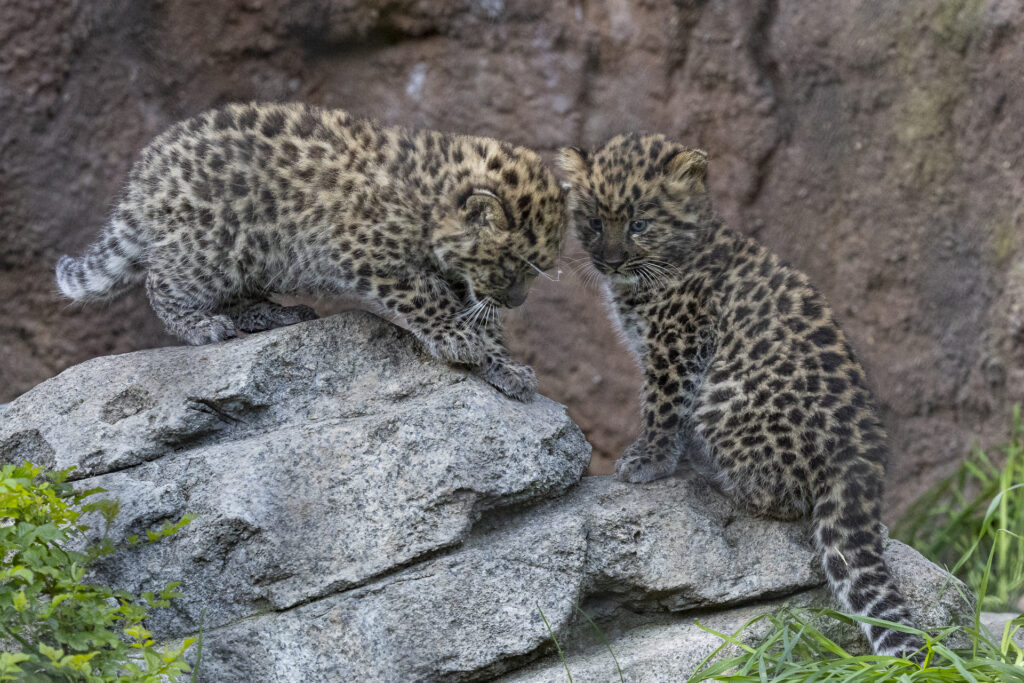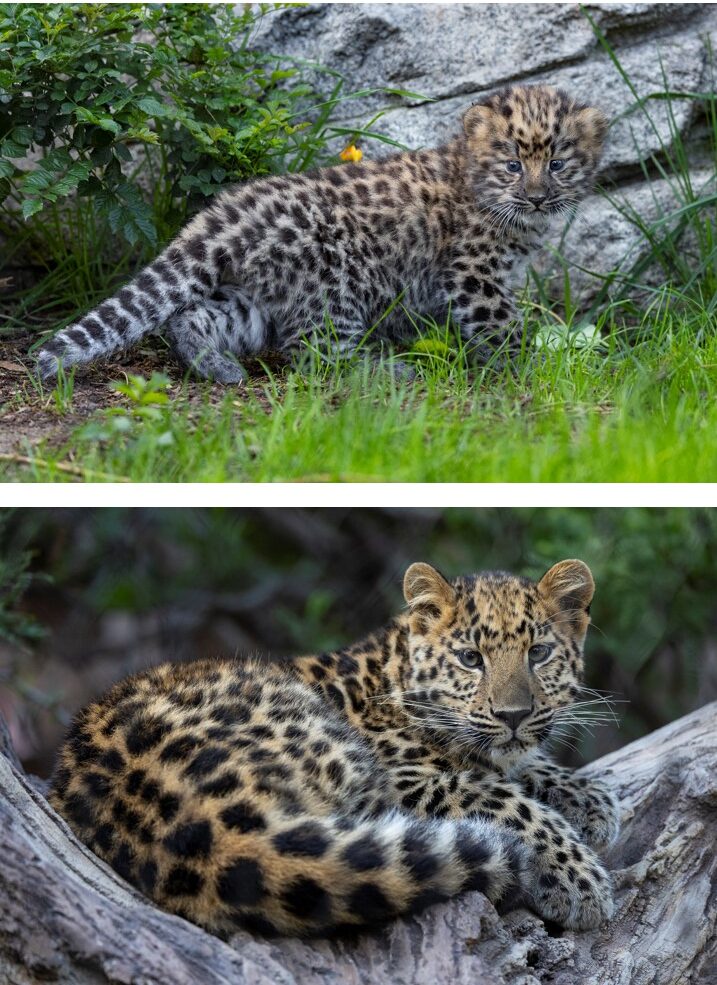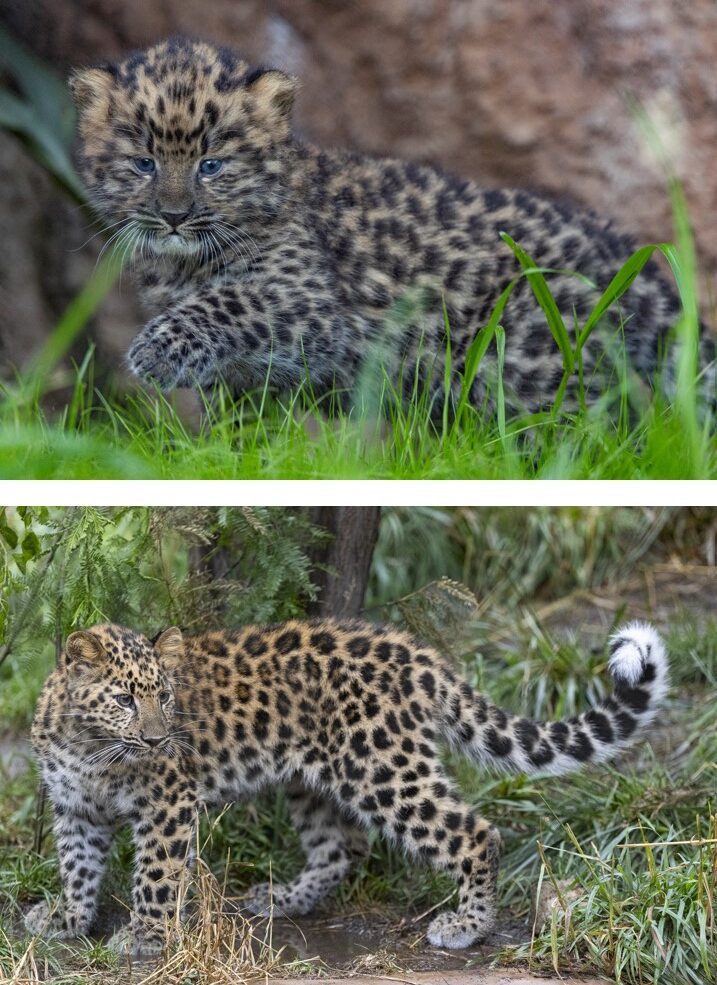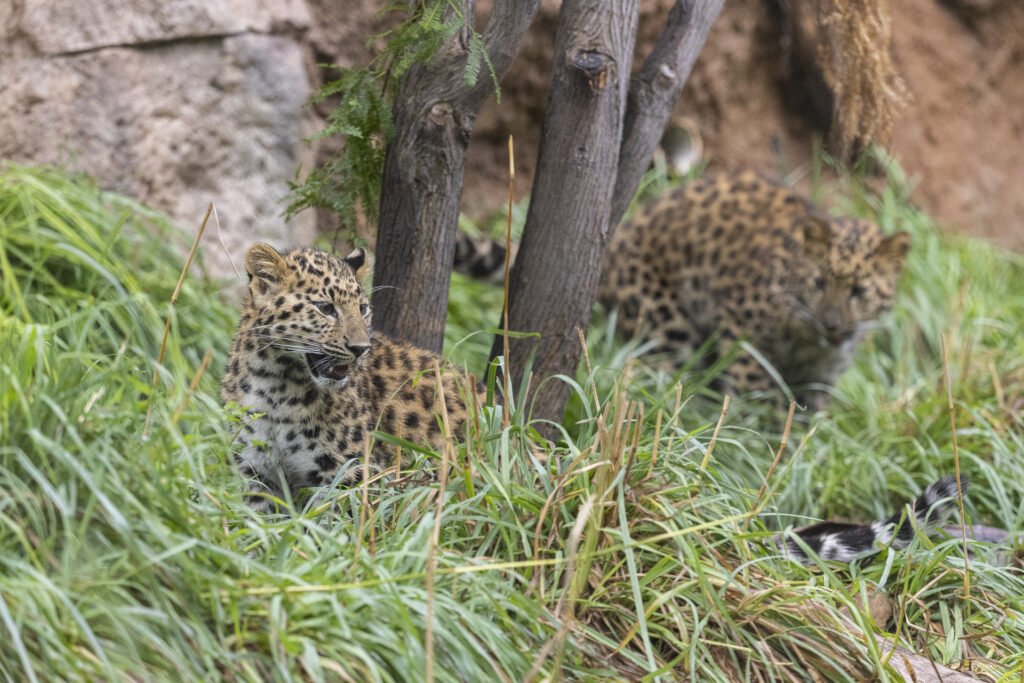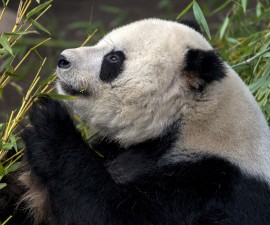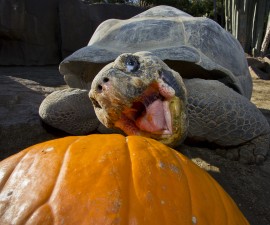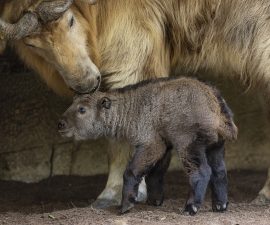Learning with Ulybka and Zorinka
Tumbling and rolling, climbing and playing, and sometimes even jumping on mom, energetic Amur leopard siblings Ulybka and Zorinka have spent the last year exploring their world. They’re discovering how to be big cats in every sense of the term and have quickly grown into their spots and paws. You might have seen them at the San Diego Zoo, interacting with one another as they learn pouncing and stalking skills to further their “big cat education”—sometimes even biting mom’s tail in the process.
Mom Satka welcomed her two cubs in February 2023. Ulybka (pronounced Oooh-lyb-kah), which means “smile,” has darker fur and a marking on her forehead that slightly resembles a smiley face. Zorinka, meaning “little star,” has lighter fur and blurred markings. As they’ve gotten bigger, their distinct patterns have spread out. From about 2 pounds at birth to about 90 pounds fully grown, there’s a lot to learn before becoming adults!
For the first few weeks after their birth, the cubs remained in their den with Satka. Like many cats, Amur leopard cubs are born blind and quite tiny, so during this time the pair grew strong and bonded with mom, who attended to their every need. As the cubs began to emerge from the den and get more adventurous, Satka kept a close eye on the duo, guiding them in the right direction, teaching them, and making sure they didn’t get into too much trouble. Over the course of the year, Satka’s behavior has changed, showing her growing trust with Ulybka and Zorinka as they’ve matured. She engages in less play and has stopped cleaning them so they can learn to manage their own hygiene. These not-so-little cubs are already almost the same size as mom!
It isn’t just Satka’s behavior that’s changed as the cubs have grown. Initially Zorinka was more food motivated and would approach meals faster than Ulybka. But now Ulybka is the first to go after food, and she even plays with it, signifying her growing interest in the world around her. They’re both curious and investigate any changes in their environment, especially when they’re ready to eat. This curiosity and eagerness to explore serves them well, sharpening their big cat life skills.
Some of their unique behaviors have stayed the same, however. Zorinka tends to keep more to herself, while Ulybka usually sticks closer to mom. And together, they still often engage in play, continuing to run, pounce, and practice their stalking and ambushing abilities—some of the first steps in learning how to hunt.
Ulybka and Zorinka are two ordinary Amur leopard cubs—and they’re also crucial additions to the global population. Threatened by poaching and habitat loss, there are only around 100 of these critically endangered big cats remaining in native habitat. This pair offers hope for the future of their species, and it’s an honor to celebrate them every day. Over the last decade, we’ve welcomed three separate Amur leopard cub litters at the Zoo, and together with our partners, we’re working to protect their native ecosystems and find long-term conservation solutions through our Asia Conservation Hub. Allies like you make it all possible.
Discover more about what your support makes possible for Amur leopards and other wildlife through our Asia Conservation Hub.


